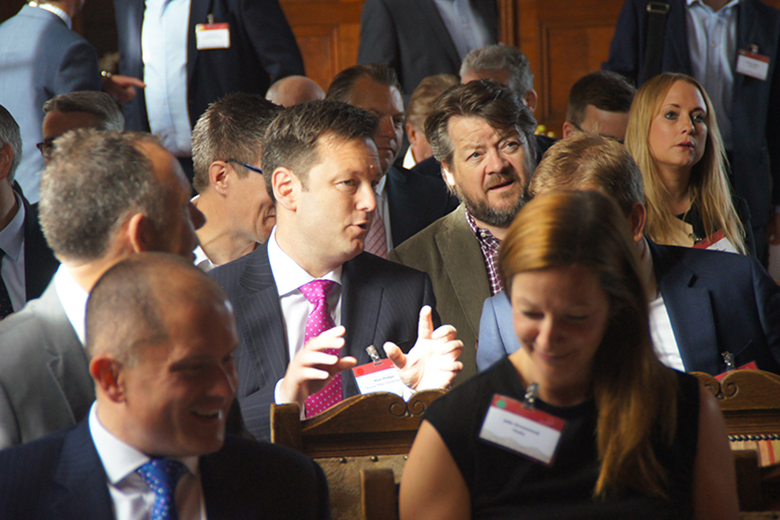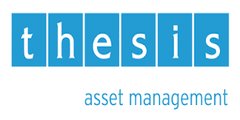

Sponsor: James Nield - Thesis Asset Management
Moderator:Roderic Rennison, Rennison Consulting
This session, led by Thesis Asset Management, sought to understand how advisers choose their DFM partners.
The six pillars referred to in the title of the session were the headline areas where Thesis was particularly interested in hearing the views of the group.
- Motivation – why do advisers delegate to DFMs?
- Suitability – this examined the role of responsibility for ensuring product and service suitability? And whether or not they felt that their documentation reflected this.
- Risk profiling – a look at the strengths and weaknesses of risk mapping tools.
- DFM comparison – how advisers choose which DFMs to work with.
- Direct or platform – this was around how advisers viewed the difference between DFMs and platforms – the pros and cons.
- Monitoring and control – how do you assess the performance of your appointed DFM and what happens when things don’t go as planned?
- Clearly quite a lot to cover in 1 ¼ hours but the group did well albeit not quite as ordered as the six pillars!
Starting off well: when asked why advisers might consider working with a DFM, the responses were that some didn’t feel sufficiently skilled to pick funds and perhaps even more importantly might not know when to get out. By outsourcing to a DFM, many in the group felt it left them free to do what they are good at. One participant admitted that their decision to outsource to a DFM was initiated by the new regulations around the investment committee having to include external people. “It set us searching for a DFM solution.”
One adviser said he would rather spend the time with his clients; a second adviser admitted realising that he didn’t know enough.
They didn’t feel that platforms did the job very well. “Advisory firms are looking to de-risk their business and to pass their risk elsewhere. So with one hundred clients across three platforms, it doesn’t take much to realise that the chances of making mistakes are possible.”
“A client on one platform may be having a different experience from another platform.”
One alternative view put forward was that some IFAs view the handling of funds and switching etc. as an important part of their role. They are worried that the client might ask for a drop in fees. They are almost scared to do less work.
“Clients just assume the investment piece is going to work - they want all the bits around it.”
Some IFAs worry about working with third parties and the potential loss of control.
“If you are working with a DFM - as an introducer - be careful to maintain the link as otherwise the IFA just becomes the postman.”
There is a legal difference depending on whether funds are held by the DFM or on a platform. The DFM has a relationship with both the wrap and the platform. The client is the IFA.
The group then talked about tripartite agreements between the DFM, the platform and the adviser. Whether bespoke or model portfolios, certain firms have slightly different agreements and firms should ensure that they take steps to understand what they are signing-up to.
There then followed a conversation around the introducer agreement with the IFA - third party wraps and nominees. Firms need to be very clear that they understand their role and the VAT position and if in doubt, should take professional advice
“If you have a concern that the DFM is going to slip behind your back and steal your client, the anonymity of a platform is a plus. Money gets placed on the platform. The platform knows the firm but not the clients.”
In terms of working with DFMs, the conclusion was that it is not about the process but more about the relationship. It was agreed that it is difficult to compare DFMs in terms of performance. There is no obvious comparison instrument. The market is also contracting slightly.
There was general agreement across the board (asset managers included) that there isn’t much to choose between all the DFMs and that is why the relationship is key.
The group talked about the Asset Risk Consultants. Apparently some 900 firms subscribe.
One adviser: “When we worked with X company, there were lots of different people looking after us and as a result the relationship wasn’t there.
Another adviser: “It is all about trust. You need to be able to justify the service they (the DFM) provide.”
The question was asked: “Would the Regulator be happy with this approach to choosing a DFM (i.e. on the basis of the relationship) after all the choice should be made on the basis of client need rather than emotional connection.” The FCA asks that the reasoning and criteria are documented.
One adviser responded: “Isn't good service and the fact that the DFM account manager cares – isn’t that the right judgement call?”
There then followed a discussion around the various research houses. The documentation is apparently very difficult to understand – “it can look like gobbledygook.” Is the data accurate?
The advisers stuck to their guns: “any business decision is made on the basis of “can you work with these people - is there mutual business respect? Are you prepared to come and explain to my clients?”
On risk profiling:
There was a view that some of the DFMs seem to be at war with some of the risk profilers. Apparently Rory Percival may re-run the analysis he did (whilst at the FCA) on all the risk profilers now that he has set up his consultancy. As you have to prove suitability - you do need a formal process.
One adviser has designed their own profile tool. Most advisers choose to use one that is psychometric -i.e. one where the results can be compared and measured.
There was some talk around the use of the WMA index and how it varies wildly from anything else. It is apparently a tough index to match.
“As an industry we need the same cogs so that you can compare the performance between the DFMs.”
On suitability:
One adviser: “Whether the product is right or not to meet the client’s objective - that is the advice piece. Investing is a different ball game. Choosing the right product is the key for the client. It is all about the wrapper which is my job. The underlying holdings are your responsibility. My job is also to ensure you haven't moved away from the parameters agreed in the first place.”
Other key points/views mentioned:
- When carrying out due diligence, you do need to check that they are not going to go bust! Scrutinise the model on the different DFMs.
- The relationship is with the company not the individual. It is a centralised process.
- A bit of a cynic: “DFMs indicate a bespoke service when in reality you are getting the same as everyone else.”
To conclude:
Our session leaders encouraged the group to work with a firm which they have done due diligence on, can trust, who deliver good service to their clients, and who they can monitor.
They also asked the group for feedback (perhaps at a later date) - do you want to meet the fund managers? How did you set your selection criteria before they went to market?



